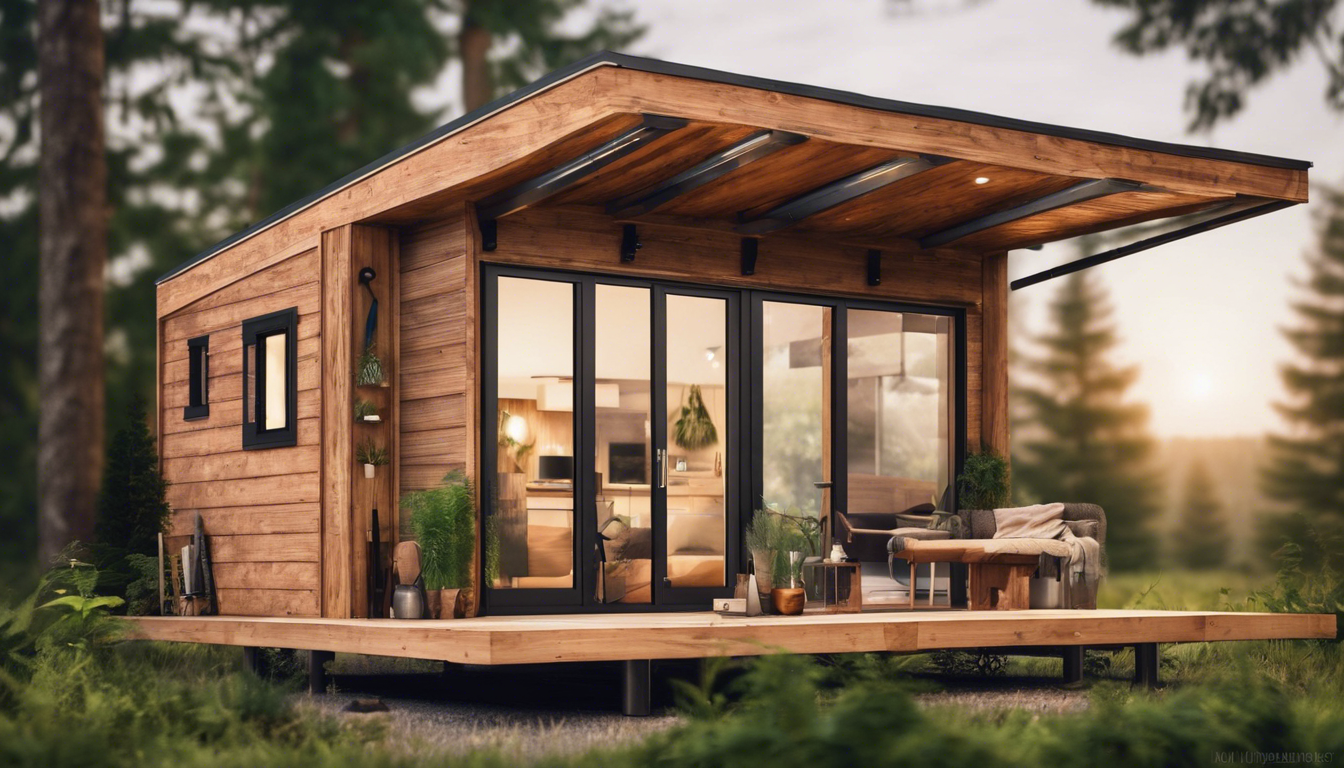Tiny homes are more than just small living spaces; they represent a shift in how we think about home design and living.
These compact dwellings focus on efficient use of space, making them ideal for those who appreciate minimalism or want to reduce their environmental impact.
In this article, we will explore tiny home plans that highlight creativity, functionality, and style.
Whether you’re considering building a tiny home or simply want to learn about the movement, understanding the key features and innovative ideas can inspire you to maximize both space and aesthetic appeal.
The Most Popular Modular/Tiny Home On Amazon
Key Takeaways
- Tiny homes emphasize efficiency by offering innovative ways to maximize limited space.
- Effective tiny home plans prioritize functionality without sacrificing style.
- Creative design ideas include multi-purpose furniture and vertical storage solutions.
- Sustainability is key in tiny home construction, often utilizing eco-friendly materials.
- Understanding local zoning laws is essential for successfully implementing tiny home projects.
Understanding the Concept of Tiny Homes
Tiny homes represent a simple and practical housing solution for many people.
These homes generally range from 100 to 400 square feet.
They provide an alternative to traditional housing, focusing on minimalism and efficient use of space.
Tiny homes plans often include multi-functional furniture and smart storage options.
This design maximizes every square foot, making these homes ideal for individuals or small families.
Additionally, tiny homes can reduce living expenses and promote a sustainable lifestyle.
Many people choose tiny homes to simplify their lives, reduce clutter, and lower their environmental impact.
Key Features of Effective Tiny Home Plans
Effective tiny home plans maximize space and promote efficient living.
Key features include open layouts that create a sense of space and allow natural light to flow.
These plans often incorporate multifunctional furniture, such as a sofa bed or a foldable table, to enhance usability.
Smart storage solutions are essential, using vertical space and hidden compartments to keep living areas organized.
Sustainability elements, like energy-efficient appliances and eco-friendly materials, are also important in modern designs.
Finally, effective tiny home plans allow for customization, enabling homeowners to adjust layouts to fit their personal needs and lifestyle.
‘Simplicity is the ultimate sophistication.’ – Leonardo da Vinci
The Most Popular Modular/Tiny Home On Amazon
Innovative Design Ideas for Maximizing Space
Tiny homes plans offer creative ways to maximize space and enhance functionality.
When designing a tiny home, consider open floor layouts.
These create a sense of spaciousness and allow for flexible use of the area.
Multi-functional furniture is another key idea.
Items like sofa beds or expandable dining tables save space while providing essential functions.
Additionally, incorporating vertical storage solutions, such as wall shelves and cabinets, helps utilize height and keeps floors clear.
Large windows can also brighten a tiny home, making it feel larger.
Finally, using light colors in decor can open up spaces visually.
These innovative design ideas ensure that every square foot in tiny homes serves a purpose.
Sustainable Materials and Construction Techniques
Tiny homes plans often prioritize sustainable materials and construction techniques.
When designing a tiny home, builders and homeowners can choose eco-friendly materials like reclaimed wood, bamboo, and recycled metal.
These choices not only reduce waste but also lessen the environmental impact of the construction process.
Additionally, builders can utilize energy-efficient systems such as solar panels and rainwater collection systems.
Proper insulation is crucial for tiny homes, ensuring energy efficiency and comfort.
By integrating sustainable practices, tiny homes demonstrate how small living can also be environmentally responsible.
Navigating Zoning Laws and Regulations for Tiny Homes
Understanding zoning laws and regulations is crucial for anyone interested in tiny homes plans.
These laws dictate where and how tiny homes can be built.
Each area has its own rules, so it’s essential to research local regulations before proceeding.
Some areas may require specific permits, while others may restrict tiny homes entirely.
Many towns are beginning to adapt their laws to accommodate the rising popularity of tiny living.
Check with your local planning department for guidelines on building codes, minimum lot sizes, and utility access.
By following these regulations, you can ensure a successful tiny home project that complies with local requirements.
Frequently Asked Questions
What are tiny homes?
Tiny homes are compact living spaces, typically under 400 square feet, designed to maximize function and comfort while minimizing environmental impact.
What are the key features of effective tiny home plans?
Effective tiny home plans often include multifunctional furniture, smart storage solutions, open floor layouts, and a focus on natural light to create a spacious feel.
How can I maximize space in a tiny home?
You can maximize space in a tiny home by incorporating innovative design ideas such as built-in storage, lofted sleeping areas, and collapsible or convertible furniture.
What sustainability practices should I consider when building a tiny home?
Consider using sustainable materials like reclaimed wood, installing energy-efficient appliances, and exploring solar energy options to reduce your tiny home’s environmental footprint.
Are there zoning laws I should be aware of when planning a tiny home?
Yes, zoning laws vary by location; it’s important to research local regulations regarding land use, building codes, and permits necessary for constructing or parking a tiny home.





Leave a Reply